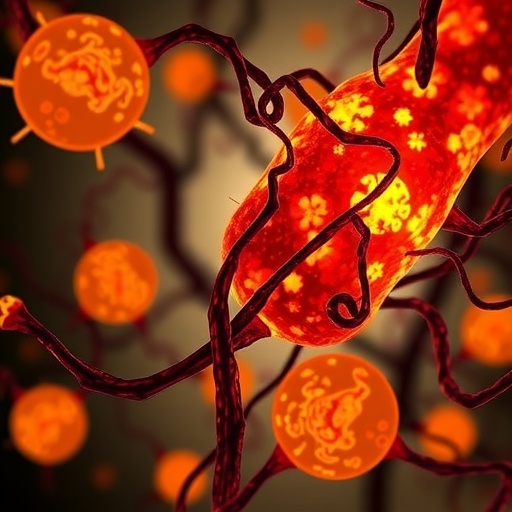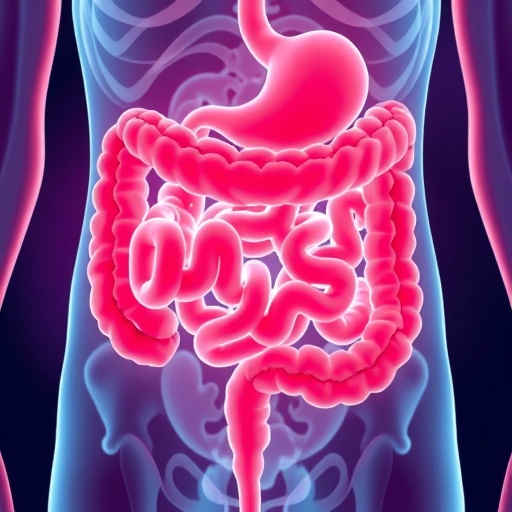In the rapidly evolving field of oncology, the pursuit of non-invasive biomarkers that can dynamically track tumor evolution during treatment is a paramount goal, especially for aggressive cancers where early intervention can dramatically shift the prognosis. Recent advances have pointed to circulating tumor DNA (ctDNA) as a promising candidate, a molecular beacon shed into the bloodstream by malignant cells. The groundbreaking study led by Zaanan, Didelot, Broudin, and their colleagues sheds unprecedented light on how longitudinal analysis of ctDNA can revolutionize the management of locally advanced resectable gastric and gastroesophageal junction adenocarcinoma, a malignancy historically challenging to treat due to its heterogeneity and late-stage diagnosis.
The PLAGAST prospective biomarker study marks a significant milestone in oncological precision medicine by systematically evaluating ctDNA as a longitudinal biomarker during neoadjuvant chemotherapy and surgical intervention. Historically, tissue biopsies provided a static snapshot of the tumor genotype, but these samples often fail to capture the complex and evolving heterogeneity within a tumor mass or between primary and metastatic sites. By contrast, ctDNA offers a real-time molecular portrait, capable of reflecting tumor burden, clonal evolution, and the emergence of resistant subpopulations with remarkable sensitivity.
Gastric adenocarcinoma and gastroesophageal junction tumors represent a major global health burden with high mortality rates. Traditional treatment strategies often involve perioperative chemotherapy combined with surgical resection, yet recurrence remains frequent, underscoring the need for biomarkers that can guide therapeutic decisions. The study’s longitudinal design allowed researchers to collect serial plasma samples at defined treatment milestones: baseline pre-treatment, during chemotherapy cycles, and post-resection. This enabled them to map ctDNA dynamics to clinical outcomes, providing crucial insights into treatment efficacy and micrometastatic disease.
.adsslot_enG9CaZPIf{ width:728px !important; height:90px !important; }
@media (max-width:1199px) { .adsslot_enG9CaZPIf{ width:468px !important; height:60px !important; } }
@media (max-width:767px) { .adsslot_enG9CaZPIf{ width:320px !important; height:50px !important; } }
ADVERTISEMENT
One of the transformative aspects of this research is the demonstration that ctDNA levels correlate strongly with radiological tumor responses, potentially outpacing conventional imaging modalities in sensitivity and temporal resolution. The team observed that patients who achieved complete pathological response exhibited rapid clearance of ctDNA, whereas persistent or rising ctDNA levels during therapy were harbingers of poor prognosis. This finding suggests that early ctDNA kinetics could serve as an actionable biomarker, guiding oncologists to tailor treatment intensity or explore alternative therapeutic regimens before clinical progression becomes apparent.
Beyond monitoring response, the study delved deeply into the mutational landscape uncovered through ctDNA sequencing. By employing high-depth next-generation sequencing panels, the researchers identified recurrent mutations and structural alterations characteristic of gastric and gastroesophageal adenocarcinomas. The ability to capture this genomic information non-invasively unlocks avenues for personalized targeted therapies, such as tyrosine kinase inhibitors or immune checkpoint blockade, tailored to the molecular profile of each patient’s tumor as revealed by their ctDNA.
Importantly, the PLAGAST study also highlights the temporal heterogeneity of tumor clones under therapeutic pressure. The gradual disappearance of some variants juxtaposed with the emergence of new, treatment-resistant clones speaks to the Darwinian evolutionary battle within the patient. This evolutionary insight not only underscores the dynamic nature of these cancers but also provides a rational framework for combination therapies designed to preempt resistance mechanisms, potentially improving long-term survival.
The researchers faced significant technical challenges inherent to ctDNA analysis, notably the low abundance of tumor-derived fragments amidst a vast background of normal circulating DNA. To overcome this, they optimized sensitive library preparation protocols and bioinformatics pipelines capable of distinguishing true somatic mutations from sequencing artifacts. Their success establishes a methodological precedent that can be adapted to other malignancies, broadening the clinical applicability of ctDNA.
Moreover, the prospective design of the PLAGAST trial allowed the team to prospectively evaluate the predictive power of ctDNA, distinguishing it from retrospective biomarker discovery studies that lack temporal and clinical contextualization. This rigorous approach strengthens the clinical validity of their findings and paves the way for integrating ctDNA monitoring into routine management algorithms for patients with gastric cancer and potentially other solid tumors.
Such integration into clinical practice could alter the therapeutic landscape profoundly. For instance, dynamic ctDNA readouts could inform decisions about the timing of surgery, the need for adjuvant therapies, or closer surveillance schedules. If ctDNA clearance is confirmed as an early indicator of complete remission, patients might be spared the morbidities associated with overtreatment, whereas those with persistent ctDNA positivity could receive intensified or alternative regimens.
The implications extend beyond individual patient care to the design of future clinical trials. Using ctDNA as an endpoint could accelerate the evaluation of novel agents by providing early molecular evidence of efficacy, reducing reliance on long-term survival outcomes which delay drug approvals. Additionally, adaptive trial designs could incorporate ctDNA dynamics to stratify patients more effectively, enhancing the overall trial efficiency and precision.
Critically, the study also sets the stage to explore the potential of ctDNA in minimal residual disease (MRD) detection after curative-intent surgery. The ability to detect subclinical residual cancer cells through ctDNA could trigger early interventions, potentially preventing relapse and improving survival rates. Furthermore, detection of MRD might guide enrollment into adjuvant trials or inform decisions about immunotherapy, a rapidly advancing domain in gastroesophageal oncology.
The comprehensive nature of the PLAGAST study’s findings represents a leap forward in understanding the molecular underpinnings and clinical utility of ctDNA in gastric and gastroesophageal adenocarcinomas. The prospective, longitudinal design coupled with rigorous molecular analyses lays a robust foundation for biomarker-driven personalized oncology approaches. As the field advances, integration of ctDNA monitoring could become a standard of care, heralding a new era in managing these challenging cancers where time-sensitive molecular insights can save lives.
In conclusion, the research by Zaanan and colleagues ushers in a paradigm shift in the oncological monitoring of gastric and gastroesophageal junction adenocarcinomas. Through meticulous longitudinal ctDNA tracking, the study demonstrates that this molecular tool provides powerful prognostic and predictive information, surpassing traditional imaging and static tissue biopsies. As clinical validation continues and technology improves, ctDNA has the potential to transform patient care by enabling truly personalized and dynamic cancer therapy in one of oncology’s most intractable disease settings.
The promise of this research extends widely. Beyond gastric cancers, the PLAGAST study’s framework offers a blueprint for incorporating ctDNA into clinical workflows across cancer types. The fusion of molecular biology, longitudinal sampling, and advanced data analytics represents a convergence that will define future cancer care. Ultimately, this study highlights the extraordinary possibilities unleashed when technology meets clinical insight, offering renewed hope to patients and clinicians battling formidable malignancies.
Subject of Research: Longitudinal circulating tumor DNA analysis in treatment monitoring of locally advanced resectable gastric and gastroesophageal junction adenocarcinoma.
Article Title: Longitudinal circulating tumor DNA analysis during treatment of locally advanced resectable gastric or gastroesophageal junction adenocarcinoma: the PLAGAST prospective biomarker study.
Article References:
Zaanan, A., Didelot, A., Broudin, C. et al. Longitudinal circulating tumor DNA analysis during treatment of locally advanced resectable gastric or gastroesophageal junction adenocarcinoma: the PLAGAST prospective biomarker study. Nat Commun 16, 6815 (2025). https://doi.org/10.1038/s41467-025-62056-7
Tags: circulating tumor DNA trackingctDNA in oncologyearly intervention in gastric cancergastric cancer treatment biomarkerslongitudinal analysis of tumor DNAmolecular portrait of tumorsneoadjuvant chemotherapy monitoringprecision medicine in cancerreal-time cancer monitoringresistant subpopulations in cancersurgical intervention outcomestumor heterogeneity assessment




